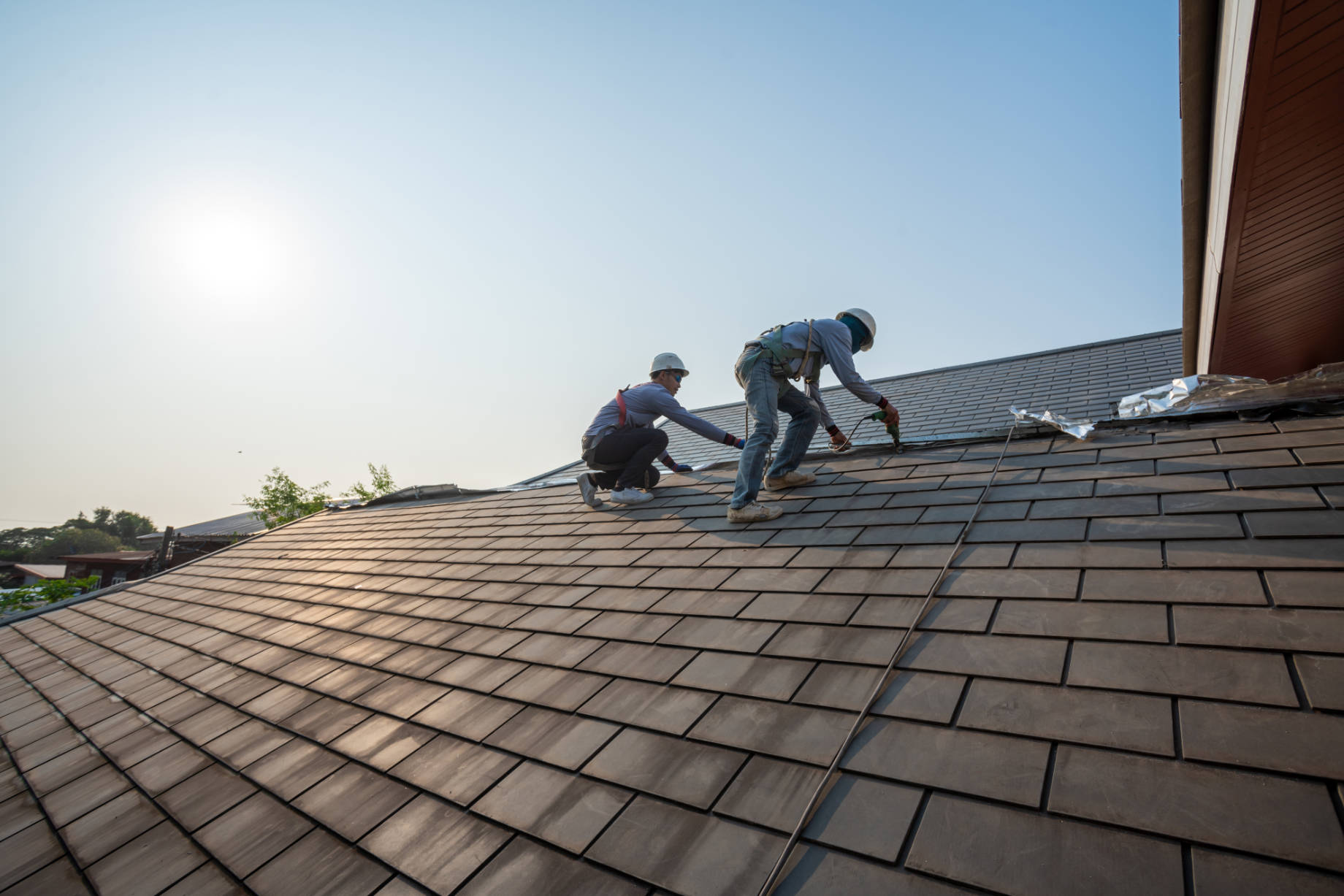
Roofs have a finite lifespan. This is true no matter how much you invest in your roof, what types of materials you used, or who installed it. But because roof replacements can be both time-consuming and expensive, it’s a good idea to hold off on a replacement until you’re sure you need one.
What are the clearest warning signs that your roof needs to be replaced?
It Starts With the Age of Your Roof
The first clue is often the simplest: how old is your roof? Most asphalt shingle roofs are expected to last between 20 and 25 years. If your roof is approaching or exceeding that age, it may be time to start thinking about replacement, even if it looks fine from the ground. Roofing materials naturally degrade over time due to exposure to sun, wind, rain, and snow, so even without visible damage, an aging roof can be vulnerable to leaks or sudden failure.
Keep in mind that the expected lifespan can vary depending on the material. Metal roofs, tile, and slate often last much longer, but they also have their own unique maintenance needs and signs of deterioration.
Shingle Trouble Is a Red Flag
Shingles that are missing, cracked, curled, or buckling are a strong indication that your roof is deteriorating. When shingles begin to lose their structural integrity, they can no longer protect the underlayment and decking from moisture. In some cases, small sections of damaged shingles can be replaced, but if the issue is widespread or you’re seeing damage across multiple areas, it’s likely time to consider a full replacement.
You should also pay attention to the granules. Asphalt shingles naturally shed granules over time, but if you’re finding large amounts in your gutters or around your downspouts, that’s a sign your roof’s protective layer is thinning.
Leaks and Water Stains Mean Trouble
One of the clearest indicators that your roof may be failing is water intrusion. This could show up as visible leaks during rainstorms, or more subtly as water stains on ceilings and walls inside the home. If you see discoloration, bubbling paint, or sagging spots on your ceiling, there’s a good chance water is getting in.
It’s important not to assume that a leak is coming from a single small hole or cracked shingle. Water often travels along beams and down walls before becoming visible. That’s why recurring leaks, even small ones, should never be ignored.
Look at Your Roofline and Structure
A healthy roof has a consistent, even appearance. If you notice sagging areas, uneven sections, or dips along the ridgeline, it may be a sign of structural issues. This could be caused by water damage to the underlying decking or even a problem with the roof’s supports. These are serious warning signs that warrant immediate professional inspection.
You should also be on the lookout for rotting fascia or soffits (the wood or composite sections that finish the edge of your roof). If these components are compromised, they can allow pests, water, and mold to creep into your attic or wall cavities.
Watch for Mold, Moss, or Algae Growth
While moss or algae growth might seem cosmetic at first, it can point to underlying moisture problems. Moss tends to retain water, which accelerates the breakdown of roofing materials and can create the perfect environment for mold growth. Mold isn’t just an aesthetic issue because it can spread into your attic and ventilation system, creating health concerns and expensive cleanup efforts.
Energy Bills Can Offer Clues
A less obvious but often telling sign is a sudden increase in your heating or cooling bills. A deteriorating roof can let out conditioned air and allow outside temperatures to seep in, forcing your HVAC system to work harder. If you’ve already ruled out insulation issues and drafty windows or doors, your roof could be the hidden culprit behind rising energy costs.
Get a Professional Inspection Before It’s Urgent
Many of the signs of roof failure aren’t always obvious to the untrained eye. That’s why it’s smart to schedule a professional roof inspection, especially if your roof is nearing the end of its expected lifespan or you’ve experienced recent storms. A roofing professional can check for structural weaknesses, internal water damage, and signs of wear that aren’t visible from ground level.
Don’t Wait Until It’s Too Late
A roof replacement is a major investment, but it’s one that protects everything beneath it. Waiting until you have multiple leaks or visible sagging can turn a manageable project into a costly emergency. If your roof is showing any of the signs above, or if you simply aren’t sure when it was last inspected, now is the time to take action.